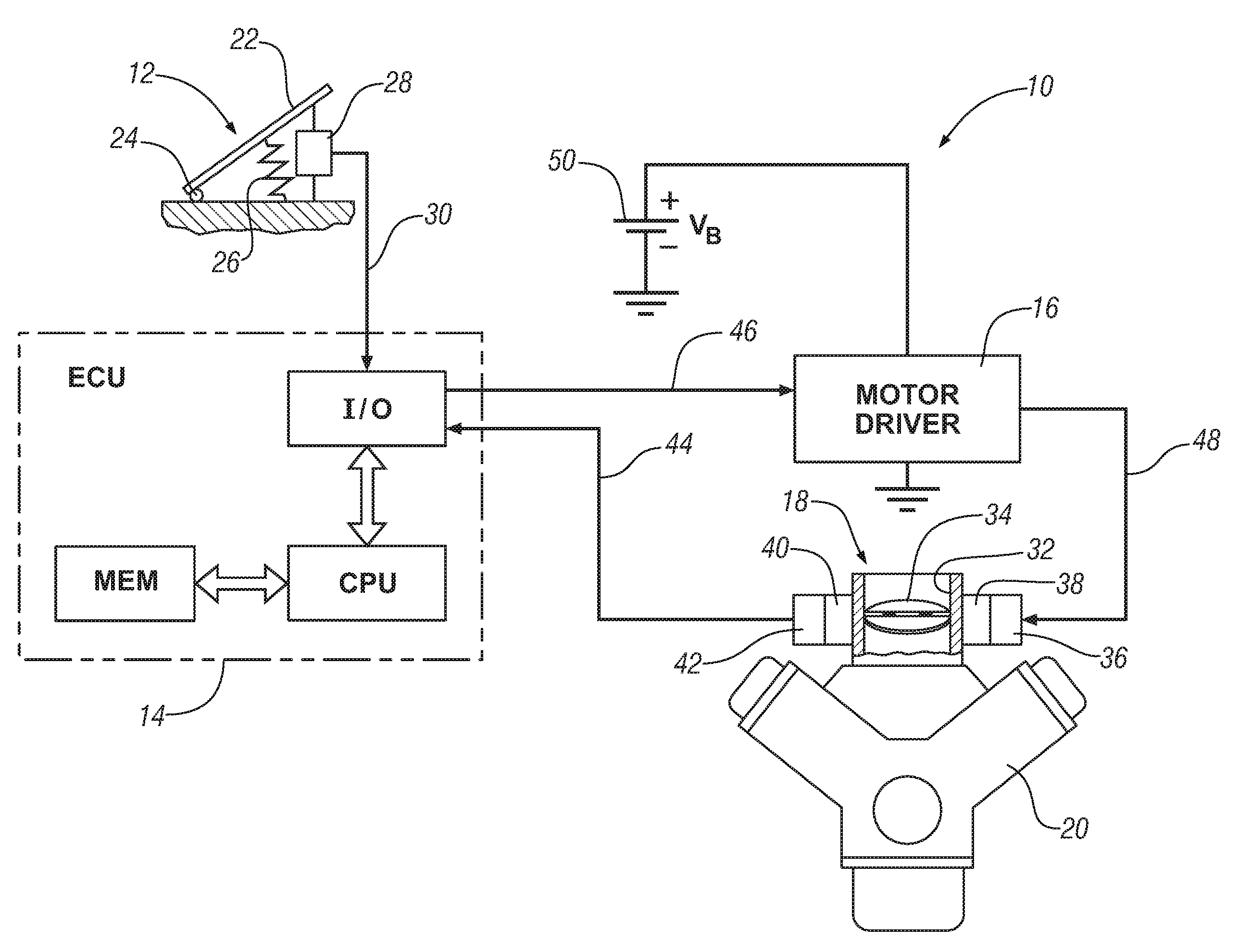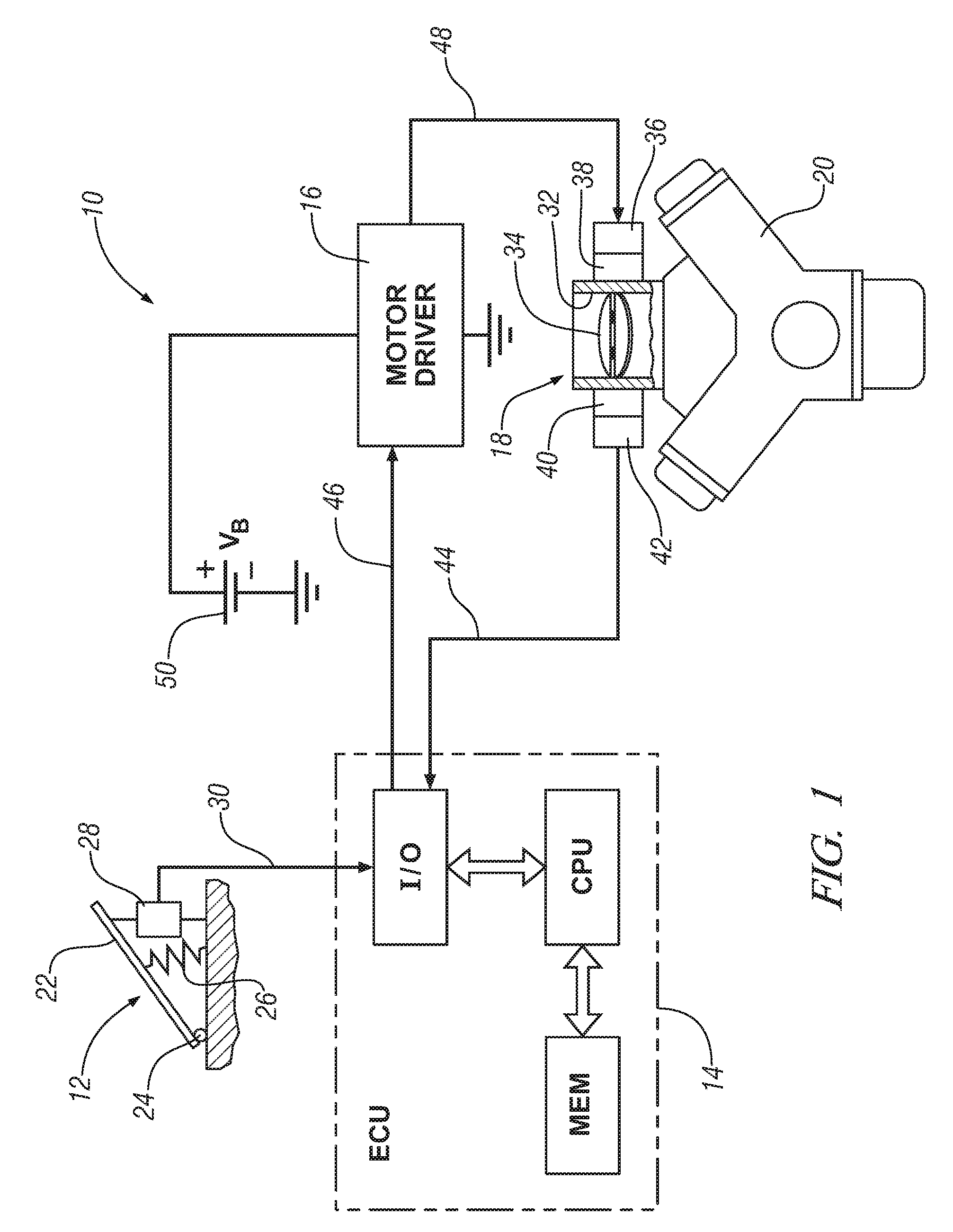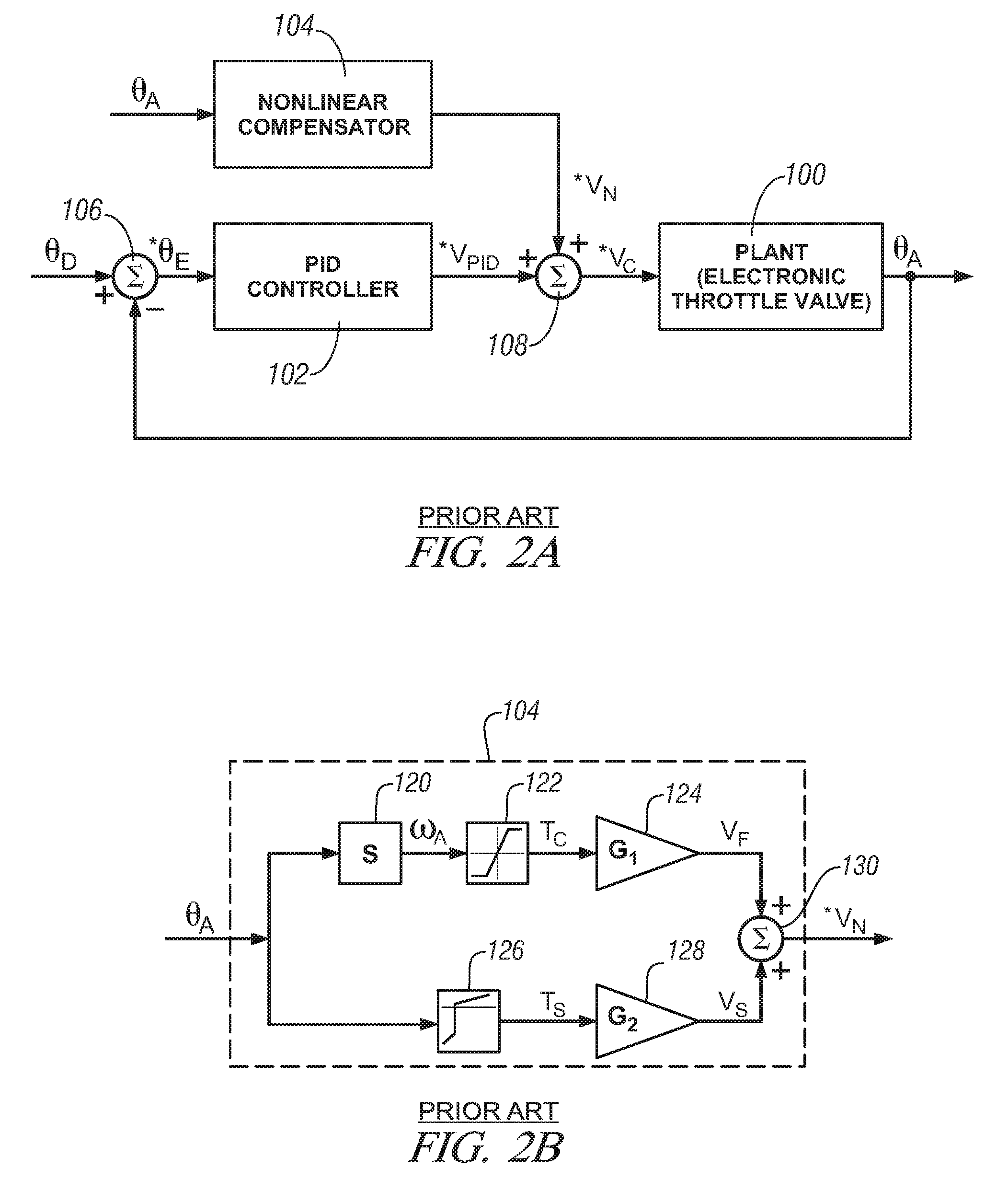Method and system for controlling a valve device
a valve device and valve body technology, applied in the direction of valve operating means/release devices, electric control, machines/engines, etc., can solve the problems of difficult throttle plate positioning, low response time required for throttle valve positioning in such etc. systems, and rarely use the maximum available motor control voltage, etc., to achieve optimal use of actuator control voltage, reduce the response time of such valve devices, and enhance acceleration
- Summary
- Abstract
- Description
- Claims
- Application Information
AI Technical Summary
Benefits of technology
Problems solved by technology
Method used
Image
Examples
Embodiment Construction
[0026]Referring now to FIG. 1, there is shown an exemplary engine control system generally designated by the numeral 10, in which the present invention may be implemented for an electronic throttle control (ETC) application. The basic components for the ETC in engine control system 10 include an accelerator pedal assembly generally designated as 12, a control unit designated here as engine control unit (ECU) 14, a motor driver 16, and an electronic throttle valve generally designated as 18 for adjusting the amount of air flowing into an engine 20. Those skilled in the art will recognize that engine control system 10 generally will include additional components that have not been shown that are typically present for controlling operational aspects of engine 20 other than ETC . The control unit 14 may also be referred to as an engine control module (ECM) or a powertrain control module (PCM) depending upon the functionality integrated into the control unit 14.
[0027]Accelerator pedal as...
PUM
 Login to View More
Login to View More Abstract
Description
Claims
Application Information
 Login to View More
Login to View More - R&D
- Intellectual Property
- Life Sciences
- Materials
- Tech Scout
- Unparalleled Data Quality
- Higher Quality Content
- 60% Fewer Hallucinations
Browse by: Latest US Patents, China's latest patents, Technical Efficacy Thesaurus, Application Domain, Technology Topic, Popular Technical Reports.
© 2025 PatSnap. All rights reserved.Legal|Privacy policy|Modern Slavery Act Transparency Statement|Sitemap|About US| Contact US: help@patsnap.com



